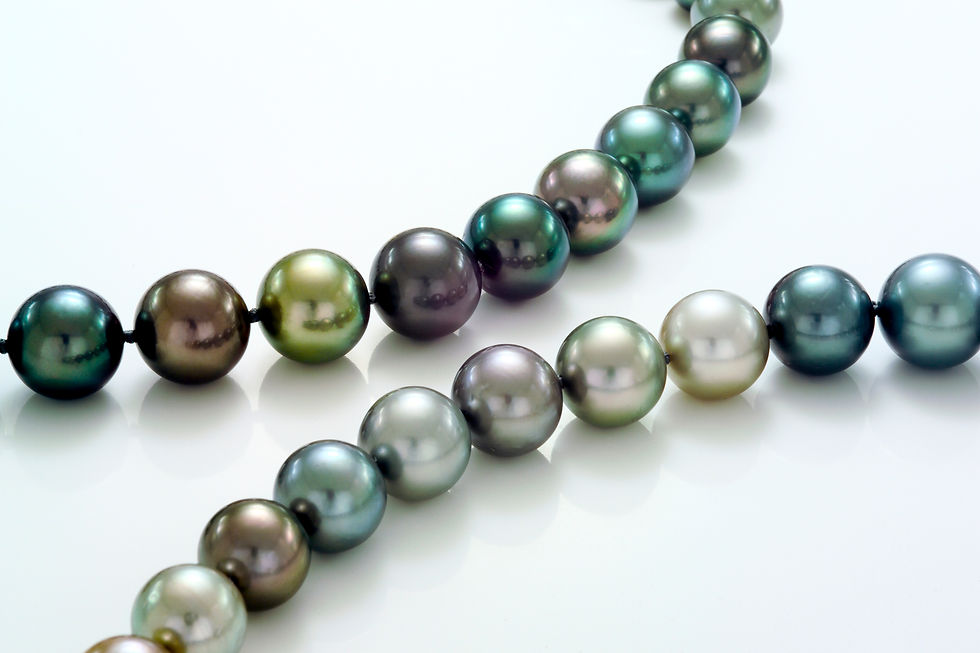Gemstone Focus: Pearls
- Heather Burleson

- Sep 13, 2021
- 2 min read
Updated: Dec 30, 2021

We've talked a little about pearls here and about restringing them from time to time, etc., but I haven't really talked about what they are or how to treat them.
The first thing to remember about pearls no matter the type is that they should be the last thing you put on and the first thing you take off. All pearls-- natural, cultured, South Sea, Tahitian, Akoya, and Freshwater-- are calcium carbonate similar to your teeth. As such, they are easily stained, scratched, and otherwise damaged. So, we need to treat them well.
"Okay, Heather, you just said a bunch of words that mean almost nothing to me. Please explain."
First things first, let's say at least 90% of the pearls you see for sale right now are cultured, that is, the oyster or mussel (we'll get into that later) has been coaxed into creating a pearl or pearls by humans. Either way, we can assume the pearls you encounter will be cultured pearls.
South Sea pearls are cultivated off the coasts of Australia, and the Cook Islands. These pearls are a bright, silvery-white, or varying shades of golden and can be quite large. These are more expensive than their counterparts. Below are three strands of South Sea pearls-- white, medium gold, and deep gold. Deep gold is the most expensive of these colors. These pearls can be up to 16mm or sometimes more, take multiple years to cultivate, and can take even longer to properly match.

Tahitian pearls are cultivated and were first to market in Tahiti. They are in varying colors of gray from a pale pewter color to a solid black with strong overtones of green, teal, pink, and mauve, referred to as the "spectre de noir," or "rainbow of black." This is another type of pearl that can be quite large and takes several years to cultivate in the oyster.

Next on the list is the Akoya pearl. This is the traditional cultured pearl. Originally cultivated off the coast of Japan, these are the pearls with which Mikimoto perfected the culturing process. These are typically a shade of white to cream with pink or yellow overtones and don't get much larger than about 9mm. The oyster is much smaller than the oysters for South Sea and Tahitian pearls (6 inches versus 12 inches). This is the type of pearl that comes to mind when someone just says, "pearl."

Finally, freshwater pearls come in several natural colors (pastels) and are routinely dyed just about any color (kind of like dyed to match shoes to a bridesmaid dress). They are sometimes created in interesting shapes as well. Freshwater pearls are cultivated in mussels instead of oysters and can be coaxed into producing multiple pearls at a time instead of the one and done way oysters are. (The photo below is natural color).

I can value, design, and create with any of these pearls (or a combination) whether or not you currently have pearls. As always, please feel free to ask questions!







Comments